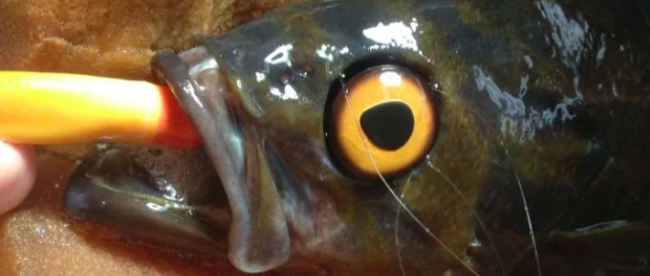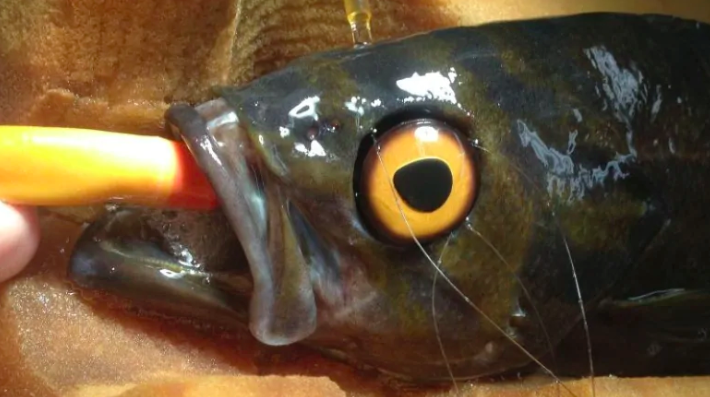The Aquarium That Turned a Blind Eye Toward Bullies


If you have been around an elementary school student in the U.S. recently, you are probably aware of the relatively recent uptick in efforts to combat bullying. Students are encouraged to treat others with kindness, empathy, and respect, and to continue to do so outside of school hours and also when socializing online. There’s even a day in October in which students and staff alike are encouraged to wear orange to show support for those among them who have been bullied.
But bullying isn’t only something us people do. It also happens to animals, apparently, and those in charge of fish are similarly interested in combatting bullying in their schools. Just ask Dr. Martin Haulena, who in 2016, was the head veterinarian at the Vancouver Aquarium in Canada.
That year, Haulena and others at the aquarium noticed a problem in one of their fish tanks. A rockfish, pictured above, wasn’t getting along with the other rockfish in its school. But it wasn’t the fault of the particular rockfish in question; it wasn’t doing anything wrong. It did, however, have only one eye. And the other rockfish took advantage of the situation. Dr. Haluena explained the situation to NPR:
Aggression is very, very normal in many, many species. And for fish in particular, you know, it’s sort of normal for them to be vying for the best spots. And unfortunately, this rockfish became more of a disadvantage than most because of that one side where he couldn’t see. And I think more so that he couldn’t see, but the other rockfish can figure out that he couldn’t see because the eye wasn’t there. And that seems to be sort of a spot that they’d kind of key on. [ . . . ] So I think they took a little too much advantage of him. And we started noticing in the last few months – the aquarists, the biologists noticed – that he was spending a lot more time on the bottom of his exhibit, his fin razor frayed-up, and he was getting quite beaten-up.
Vancouver Aquarium wasn’t going to tolerate this bullying if it didn’t have to. And in this case, they didn’t. You can’t use the same tactics you’d use among second graders, of course — fish aren’t quite intelligent enough to be trained to not pick on other fish. But Haulena and team had another plan: they’d convince the other fish that the picked-on rockfish wasn’t blind.
How? By giving the victim rockfish a fake eye, one designed to convince the others that their schoolmate could see what they were up to. The aquarium’s blog summed up the surgery: “With help from Seattle Aquarium’s head vet, Dr. Lesanna Lahner, Haulena affixed the taxidermy eye to the bone above the eye socket by sewing it on with nylon sutures and attaching it with titanium clips. The fish was put under anesthesia for the procedure.” Take another look at the image above, and you’ll see evidence of this: there are thin threads around the (false) eye, and the fish is intubated, allowing the anesthesia to flow into its body.
The idea worked. Lahner later told the press that the fish with the fake eye was “doing well” adding that “since it’s had the prosthetic eye, it’s been out and about and acting more like a normal rockfish.” Given the success, other aquariums have considered similar procedures for their one-eyed fish as well.
Bonus fact: The fish above may end up using that fake eye for a relatively long time — it is a from the species Sebastes caurinus (collquially “copper rockfish”), which often live to be 40 to 50 years, which is pretty old for a fish. (Most fish live to be only a couple years old, with ten years being on the high end.) But one of its cousins may live much, much longer. The rougheye rockfish (Sebastes aleutianus) lives to be 120 years old or older, and in 2013, a Seattle-area man caught one believed to be more than 200 years old. That specific fish, at the time of the catch, was one of the five oldest fish on record.
From the Archives: Anti-Terror Fish: As the title suggests, here are some fish that help stop terrorism.
